

Guidelines for submitting articles to San Pedro del Pinatar Today
Hello, and thank you for choosing San Pedro del Pinatar.Today to publicise your organisation’s info or event.
San Pedro del Pinatar Today is a website set up by Murcia Today specifically for residents of the urbanisation in Southwest Murcia, providing news and information on what’s happening in the local area, which is the largest English-speaking expat area in the Region of Murcia.
When submitting text to be included on San Pedro del Pinatar Today, please abide by the following guidelines so we can upload your article as swiftly as possible:
Send an email to editor@spaintodayonline.com or contact@murciatoday.com
Attach the information in a Word Document or Google Doc
Include all relevant points, including:
Who is the organisation running the event?
Where is it happening?
When?
How much does it cost?
Is it necessary to book beforehand, or can people just show up on the day?
…but try not to exceed 300 words
Also attach a photo to illustrate your article, no more than 100kb

The Excolegiata de San Patricio in Lorca
The Excolegiata is a cathedral-sized church in Lorca built between the 16th and 18th centuries
Of all the historic and monumental buildings in Lorca perhaps the most important is the Excolegiata (or Antigua Colegiata) de San Patricio, which was originally built to commemorate a victory in battle over the Moors in the 15th century and now boasts one of the best examples of the typical Murcia baroque façade in the whole of the Region.
Situated along the northern side of the Plaza de España in the centre of Lorca, it forms part of a series of buildings which have been awarded Item of Cultural Interest status, including the Town Hall, the Casa del Corregidor and various palatial residences dating from the 17th and 18th centuries. Towering over all of them, though, is the place of worship whose construction was decided upon to commemorate the victory which was achieved by Alonso Fajardo “El Bravo” against Moorish raiders from Granada in the Battle of Los Alporchones in 1452.
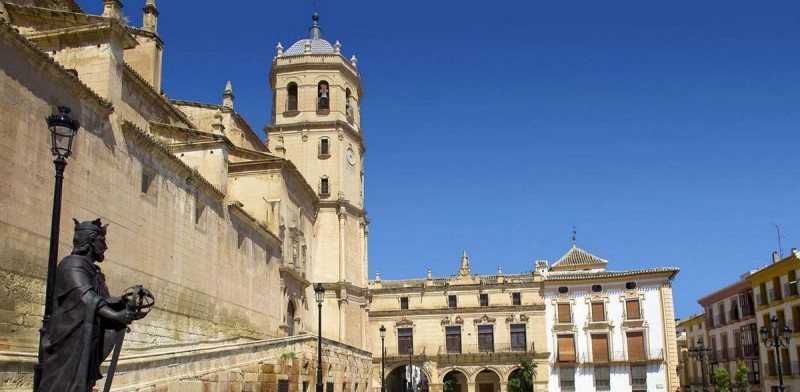
The battle took place on March 17 of that year, hence the insistence of the Lorquinos on dedicating the new church to Saint Patrick, and as the design phase progressed it soon emerged that this was to be no ordinary church. Instead it took on the dimensions of a Cathedral, these aspirations of grandeur stemming from the prosperity of Lorca in the 16th century following the expulsion of the Moors from neighbouring Granada in 1492.
That it was economic prosperity which lay behind the decision to build the church of San Patricio is illustrated by the fact that it was not until 1533, over 80 years after the Battle of Los Alporchones, that a Papal Bull was issued by Clement VII authorizing its construction on the site of a previous church dedicated to San Jorge: thus the city of Lorca shifted its allegiance from the patron saint of England to the patron saint of Ireland!
During recent restoration works to the church a series of frescos from the original church dedicated to Saint George were uncovered and these can now be viewed by visitors to San Patricio through a section of glass floor.
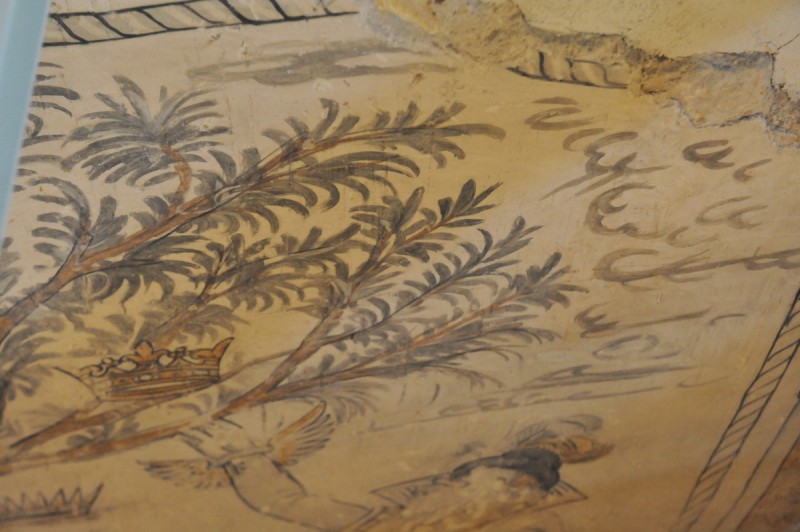
Once permission to build had been granted, though, the construction of San Patricio was not achieved overnight, and a series of delays meant that the building was not pronounced complete according to the guidelines drawn up by Jerónimo Quijano until 1780. This accounts for there being a baroque façade on a building started in the 16th century, and a variety of architectural influences can be seen in the three naves, twelve side chapels, choir, bell-tower and ambulatory.
Visiting the Excolegiata de San Patricio
The church is open to the public every day from 11am to 1pm, except Sunday and guided tours are available from the tourist office which is located outside in the Plaza de España (see scrolling feed below for updated information).
Entry price is 2€ per head (free for under-12s), with tickets available from the tourist office in the Plaza de España, the La Merced visitors centre and Lorca castle.
Alternatively, audio guide tours are available in English and French as well as Spanish as follows:
Visiting times
Monday to Saturday 10.30 to 14.30 and 17.00 to 19.00
Sunday 10.00 to 12.30
The last admission is 30 minutes before the doors close.
Cost
Standard: 6 euros
Reduced: 5 euros for over-65s, young people, unemployed, and those with limited physical or mental capacities. Those with over 66% discapacity may enter free of charge.
Groups of over 15 people: 4 euros per head
Location of the Excolegiata de San Patricio in Lorca: Plaza de España
History of the Excolegiata de San Patricio in Lorca
Exactly who designed the church of San Patricio in Lorca is not known, and there is even a theory that the plans were submitted with Pope Clement VIIs’ Bull, but this is very unlikely. More probable, however, given the similarity of many structural features between San Patricio and the Cathedral of Murcia, is that the same hand lay behind the plans for both.
The prime suspect has thus become Jerónimo Quijano, who was appointed Head of Works at Murcia Cathedral in 1526 and was the most prestigious architect in the south-east of Spain at the time, and the suspicion that he was involved with the Lorca project is strengthened by the fact that his services were also contracted for a weir and bridge in the River Guadalentín.

When construction began in 1533 the initial plans were for the building to be completed in eight years, but so long and constant were the interruptions that it was not until two and a half centuries later that the building was finished. Most of these interruptions were caused by a lack of funding, although there were also numerous complaints to settle from families who had purchased burial rights in the church of San Jorge and demanded that the same privilege be maintained in the new church.
The first phase of building was short-lived, but the apse at the back of the church was completed, as was the first storey of the tower which houses the Sacristy, and in 1553 a second phase began which consisted of the rest of the chapels in the ambulatory, part of the crossing and the roof. The southern side door was put in place, and the first two levels of the bell-tower rose above the square.
During the 17th century a series of disasters affected Lorca, including drought, earthquakes, floods and epidemics. The river Guadalentín burst its banks in 1651 and 1653, a plague of locusts destroyed crops in 1647, an earthquake struck in 1674, and amid the resulting economic downturn people left the city in droves. Unsurprisingly this slowed progress down at the church of San Patricio, and the only development to speak of was the building of the walls which surround the building.
In addition, in around 1640 carpenter Andrés García fashioned the ornate seating in the choir, but by 1679 the lack of funds was so acute that a request was made to the King, Carlos II, for help: a reply in the affirmative led to the baroque façade being created by José de Vallés.
But it was the 18th century which saw the end of construction, with the vaulted roof, the bell-tower and the main doors finally taking shape.
One of the consequences of the earthquakes which struck in Lorca in May 2011 was that the church suffered extensive damage, and it was not until 2017 that restoration was completed. Fittingly, San Patricio reopened to the public to coincide with Saint Patrick’s Day, although the pinnacles on the roof were not reinstalled until three months later.
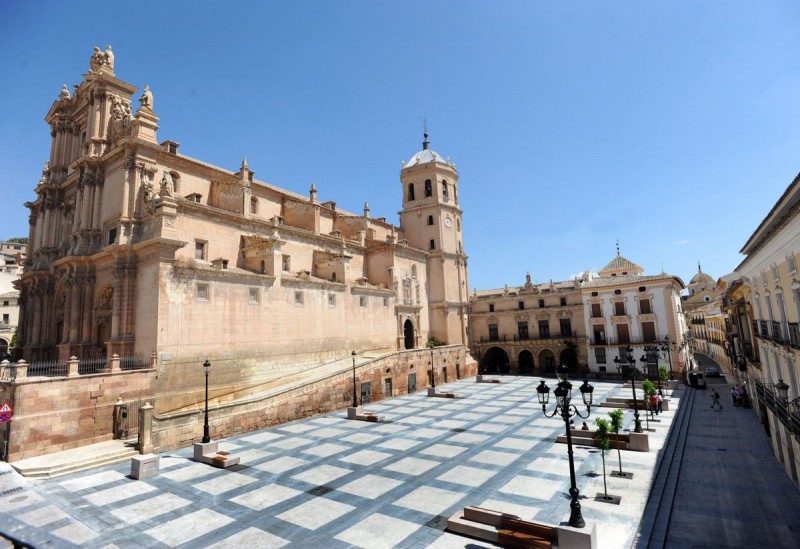
The exterior of the building
It is the main façade which is nowadays viewed as the most outstanding feature of San Patricio, dating from between 1694 and 1704 and rivaling the structures which adorn the Cathedral of Murcia and the Basílica de la Vera Cruz in Caravaca as prime examples of the Murcia baroque style.
Elements of this façade show the influence not only of architects in Valencia and Granada but also the sober style typical of Jesuit buildings in Lorca and elsewhere in south-eastern Spain, especially in the higher of the three levels. The lowest section, though, is designed as a triumphal arch in five sections, the outer two of which are devoid of ornamentation while the three in the centre are elaborately decorated with floral motifs and, unusually, images of children: this is scarcely found elsewhere in Spain, except at the Cathedral of Cuenca.
The second and third levels of the façade are far plainer, the highlight being the niche in which the figure of San Patricio stands, wearing his episcopal robes, while the top level contains just one section with another figure, this time representing the Virgen del Alcázar, the former patron of Lorca.
Another important feature of the church is the door on the southern side, which after it was built in 1571 was the main entrance for many years. Again it is themed on the design of a triumphal arch, above which are three niches, the central one containing an image of the Virgin Mary while the others are home to San Francisco de Asís and San Antonio de Padua.
Access from the Calle Abad de los Arcos on the northern side of the church is via the Portada de la Epístol, which was the work of stonemason Lorenzo de Goenaga in the second half of the 16th century.
The four-storey bell-tower is built entirely of stone, and the two phases of its construction can clearly be distinguished, the first dating from the 16th century and the second from the last years of building, after 1761.
Another important feature is the chapter rooms of the church, which date from 1741 and are located next to the main building. The four arches include the one which spans Calle Cava, while the second floor boasts four balconies and the building is topped by gargoyles and pinnacles alongside a statue of San Patricio.
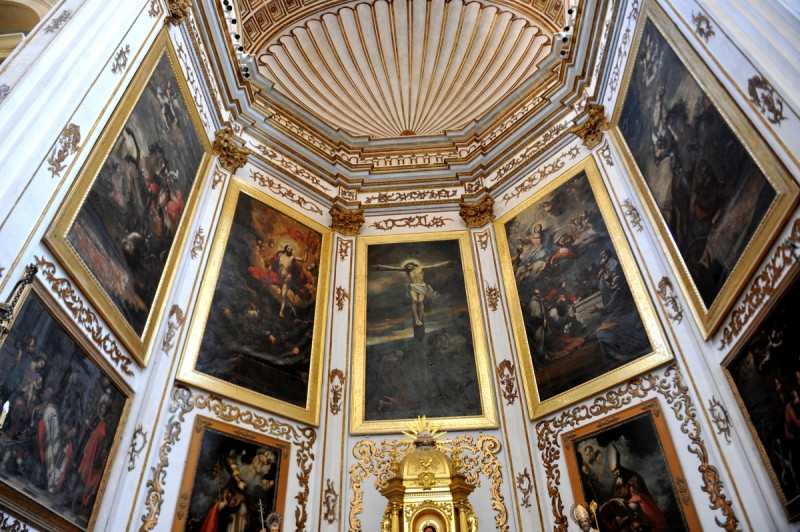
Interior features
One of the first features to catch the eye at the church of San Patricio in Lorca is the monumental main altar, which belongs to the Renaissance style although the decoration which surrounds it was renewed in its entirety following the destruction of the Spanish Civil War (1936-39). Only the ornate railings created by José de Campos in 1734 remain of the original ornamentation.
At the centre of the altar screen is a painting of the crucifixion by Wssel de Guimbarda (1897), while others show San Clemente, San Patricio, the Adoration of the Magi and the Shepherds, the Resurrection, the Assumption, San Jorge and San Millán. These were created by local artist Pedro Camacho (1644-1716).
A baptismal font from the church of San Roque, which dates from between the 12th and the 14th century, has been placed in a side chapel near the Epístola door, while during the restoration work after the earthquakes of 2011 workers discovered a staircase which leads down to one of the old burial crypts. Inscriptions remain on only three of the niches, dating them to the 17th century, and the finding of this room raises the intriguing question of how many other secrets might lie beneath the floor of the nave!
But in the restored Collegiate Church of San Patricio perhaps the outstanding feature is the religious artwork, much of it painted (although sculptures are also present). Restoration staff found traces of the original paint which was used to decorate the chapels alongside the main nave and in the apse, and many of these have now been re-decorated.
The original paint was effectively removed by the application of quicklime for disinfection purposes, but once the effects of this treatment have been reversed it is also possible to see sketches showing the decorative and architectural elements which were added: these are effectively instruction manuals for builders and stonemasons, and were most probably scratched onto the walls by those overseeing construction centuries ago!
On the altar screen the central painting of the Crucifixion is by Cartagena artist Wssel de Guinbarda (1894) while the other main pictures show San Clemente, San Patricio, the Adoration of the Magi, the Adoration of the Shepherds, the Resurrection, the Assumption, San Jorge and San Millán. These were all the work of Lorca artist Pedro Camacho (1644-1716).
The U-shaped choir stands in the centre of the nave, and the stone screen at the rear is partly the work of Nicolás Salzillo, the man who brought his Napolitan sculpture skills to Murcia in search of employment prior to the birth of his better-known son Francisco. San Patricio is featured in the centre of this screen, accompanied by two angels, and other figures seen are those of San Isidoro, San Leandro, San Fulgencio and Santa Florentina.
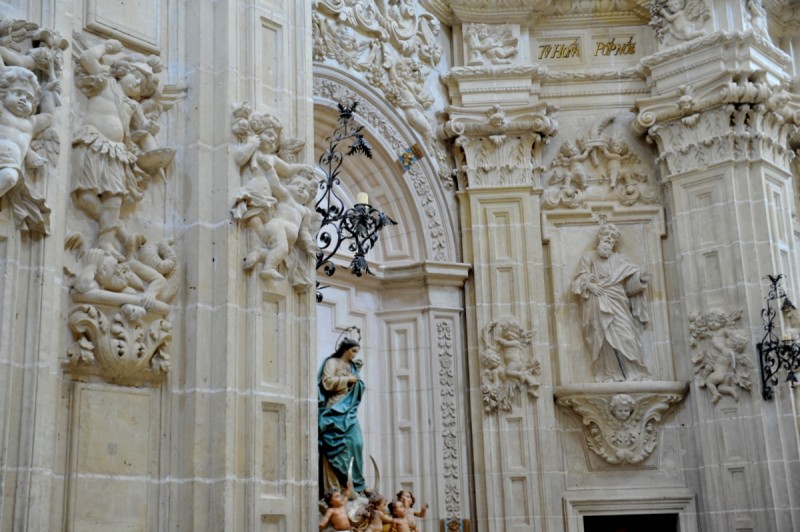
The side chapels, arches and other walls of the church contain numerous other works, many of them painted directly onto the stonework, and the combination of so many elements serves to heighten the monumental scale of the building. A wide variety of styles can be seen, from the classical approach to processional sculpture figures of Roque López (18th century) and Sánchez Lozano (20th century) to a Guatemalan-style shrine in which all of the figures are dark-skinned, and given that so much religious imagery was lost forever during the Spanish Civil War it is a marvel that so many elements have either survived or been replaced.
The church of San Patricio in Lorca may never have achieved the Cathedral status which its founders intended, and may have lost its Collegiate privileges over 100 years ago, but nonetheless it remains the second largest and one of the most important in the Region of Murcia, and the artwork is one of the elements which lend it that high degree of prestige.
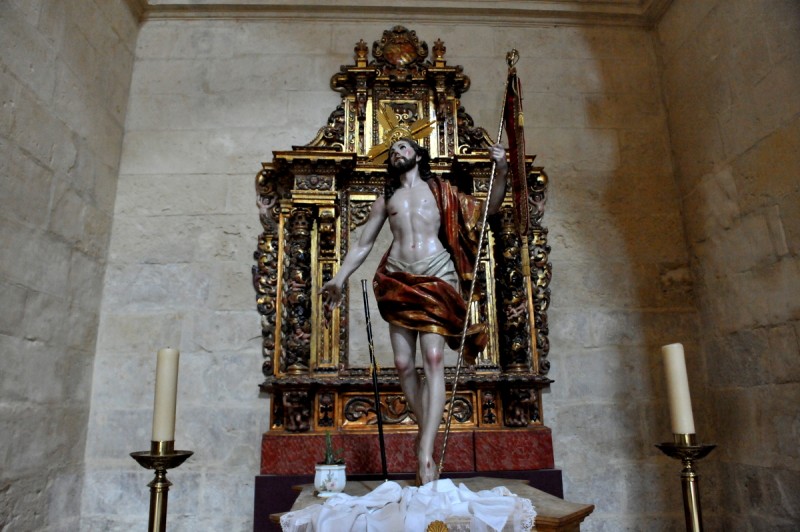
Collegiate status
When Clement VII authorized the building of the church of San Patricio in Lorca it was with “Collegiate” status, which means that it has many of the characteristics of a cathedral.
For example, a Collegiate church is governed by a college of canons who also officiate at daily worship, and are presided over by a dean or a provost. However, a Collegiate church does not have its own Bishop and does not have the power of responsibilities of a Diocese. In England three “collegiate” churches have survived since the Middle Ages as part of the Church of England: Westminster Abbey in London, St George's Chapel in Windsor Castle and the church of Saint Endellion Church in Cornwall.
After some decades of crisis the church of San Patricio had its collegiate status withdrawn in 1851, hence its current name of “Excolegiata” or “Antigua Colegiata”.




































